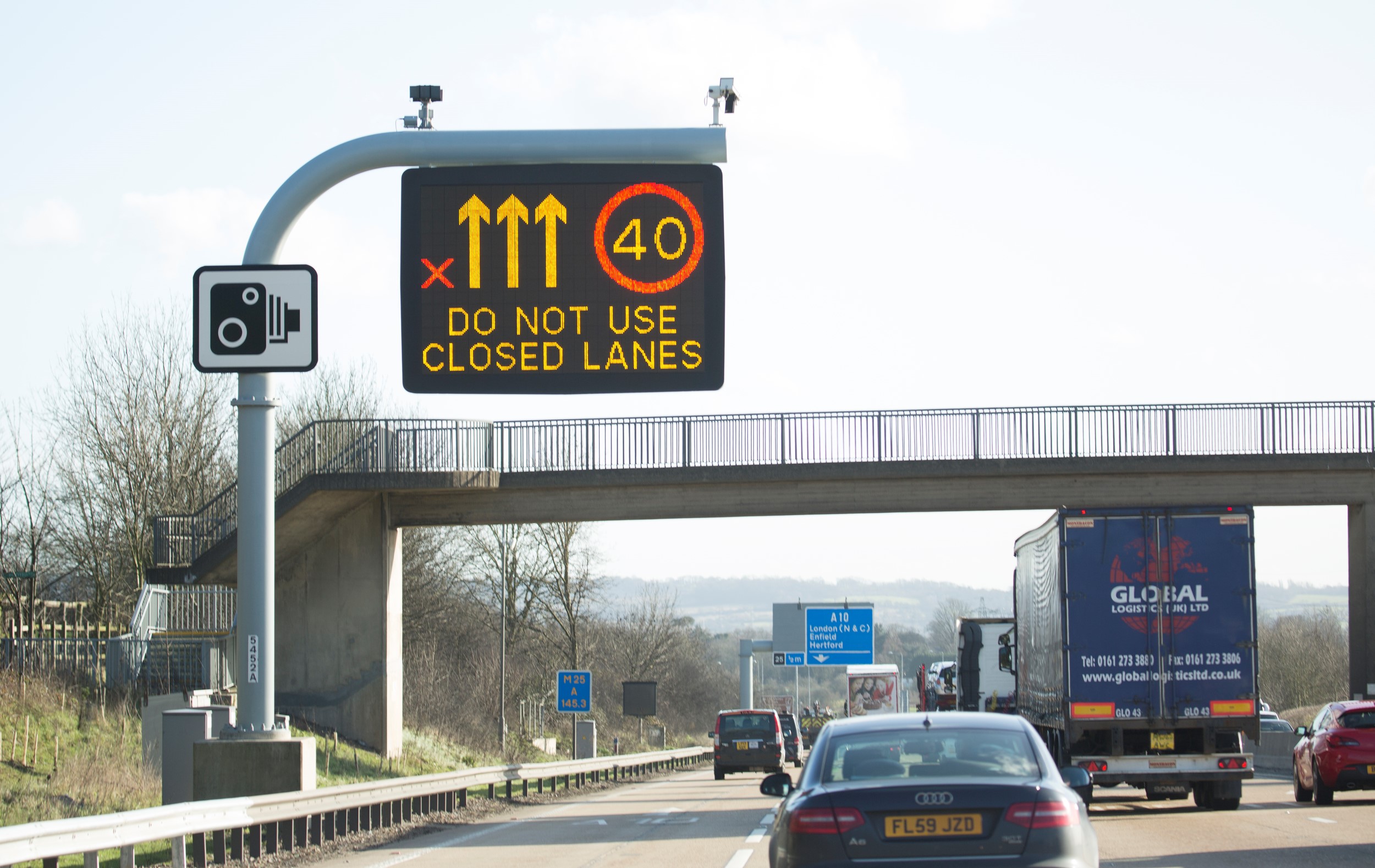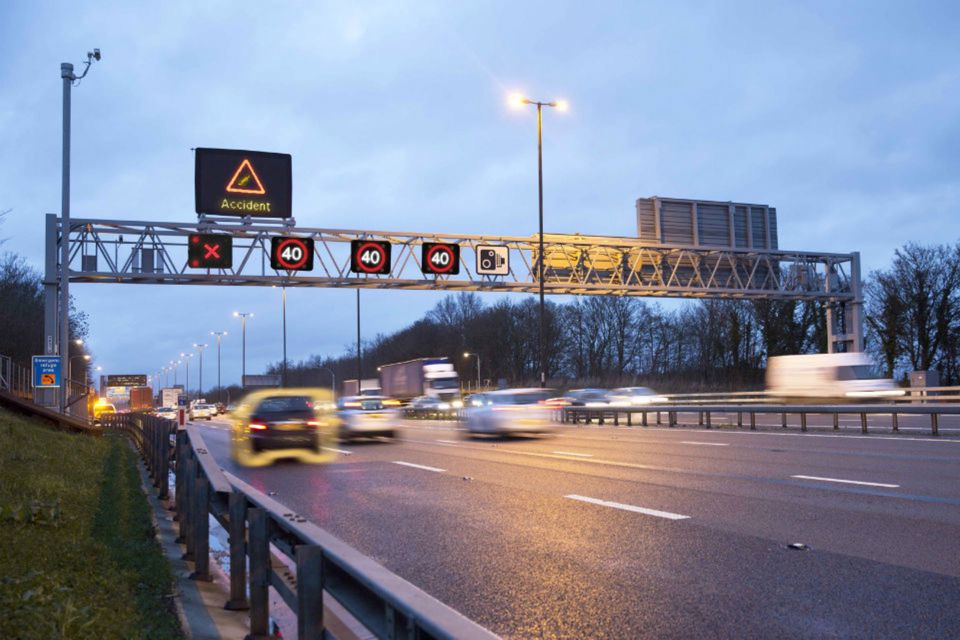An increasing number of drivers have been caught ignoring Red X signs on smart motorways since 2021, according to new research from IAM RoadSmart.
Figures obtained by the road safety charity show that more than 53,000 motorists have been caught by police enforcement cameras disobeying Red X signs.
In 2021, nine police forces were enforcing against Red X infringements, with 4,393 drivers caught, according to a Freedom of Information (FOI) request to police.
A further eleven forces began prosecuting against the contravention in 2022 resulting in 20,773 motorists being captured by cameras.
In 2023, a total of 21 forces used enforcement cameras to catch 28,231 drivers breaking the law.
Almost all police forces with smart motorways within their boundary areas are now actively pursuing this type of criminality.
RAC road safety spokesperson Rod Dennis said: “These figures sadly underline the fragility of one of the systems designed to keep stricken drivers safe on smart motorways.
“The safety of any driver who is unlucky enough to stop on a smart motorway depends entirely on other people seeing the red-X sign and moving to another lane.
“It’s therefore terrifying to think that so many people have either ignored them or failed to spot them in the first place.”
The Red X is often used to close lanes on a smart motorway when an obstruction such as a broken-down vehicle is detected in the road ahead.
Closed lanes are also used by the emergency services attending those who might need urgent assistance at the incident in question.
Enforcement cameras, which have been able to enforce contraventions since 2019, automatically detect vehicles passing illegally under a Red X, which can result in a fixed penalty notice of up to £100 and three points or, in some cases, more severe penalties or a court appearance.
IAM RoadSmart director of policy and standards, Nicholas Lyes said: “Ignoring a Red X sign on a smart motorway is dangerous because it risks a serious collision and for this reason, we welcome police forces clamping down on those who break the law.
“If a lane is closed on smart motorway, it usually indicates there is either a stranded vehicle ahead, people are working in the road, or there has been a collision.
“Disobeying the sign puts the lives of those in the vehicle as well as those ahead in danger. If you see a Red X sign, you should slow down and move into an open lane when there is sufficient space to do so.”
Between 2021-23 inclusive, Surrey Police topped the table with 11,360 drivers caught committing Red X offences along stretches of the M3, M23 and M25 – the latter being Britain’s busiest motorway.
Thames Valley Police had the second highest volume with 9,957 motorists being snapped by cameras over the same period.
Further north, Greater Manchester Police had the third highest national number of intended prosecutions with 6,120 drivers committing Red X offences on motorways.
Bedfordshire Police did not begin enforcement until 2023, meaning only 28 drivers were caught ignoring the Red X sign by the police on this county stretch of the M1.
Dennis said: “It’s largely roadside signs that communicate which lanes are closed which are harder for drivers to read than gantries that span the carriageway and have signs over each lane.

“It’s for this, and other reasons, that we’ve called on the new Government to convert all-lane running stretches of smart motorway to either controlled motorways – with hard shoulders permanently restored – or to dynamic hard shoulder schemes, where a hard shoulder is in place for much of the day and night, and only opened to traffic at the busiest times of day.”
Recent smart motorway schemes were designed to ease congestion by turning the hard shoulder into a live lane.
The first motorway to convert the hard shoulder into part-time running lane was the M42 in 2006.
In 2013, the M25 was the first motorway to have stretches of hard shoulder removed altogether and replaced with a running lane.
As of April 2024, there are 396 miles of smart motorways in England, which includes all-lane running (hard shoulder permanently removed); controlled (hard shoulder retained and variable speed limits); and dynamic (hard shoulder sometimes open to traffic) configurations.
Drivers encountering problems on an all-lane running motorway should head for emergency refuge areas (ERAs), however not all make it.
Data suggests there were 24 fatalities on a smart motorway in 2022, of which 14 occurred on motorways without a hard shoulder.
Concerns have also been raised about whether radar technology to detect stranded vehicles is reliable.
Recent IAM RoadSmart research revealed that almost 89% of 2,000 motorists surveyed believed that the hard shoulder on smart motorways should be reinstated immediately, indicating continued public hostility to the schemes.
Independent road safety campaigner, Meera Naran, whose eight-year-old son Dev died in a smart motorway collision on the M6 in 2018, said: “In an emergency, every second counts.
“The Red X provides a layer of safety for the public, emergency services, recovery operators, and road workers.
“An incident can occur on any lane of the motorway and lanes are closed for a number of reasons. When in operation and abided by, this could save a number of lives, including your own.”
Lyes added: “The majority of drivers have serious reservations about the safety of smart motorways where the hard shoulder has been removed, and these figures are unlikely to persuade them they are safe.
“We know that no new all-lane running smart motorways will be built but it does beg the question of what we do with the existing stretches that are in operation?
“This is something the new Government needs to give some serious thought to.”
Work is ongoing work to raise awareness among road users, according to National Highways, with nine Red X awareness campaigns launched since 2016.
“A Red X signal is there to increase the safety of everyone using the road by highlighting an issue ahead,” said a National Highways spokesperson.
“Above 90% of drivers observe Red X signals, but ignoring Red X signals is an offence and puts themselves and others at risk.”





















Login to comment
Comments
No comments have been made yet.